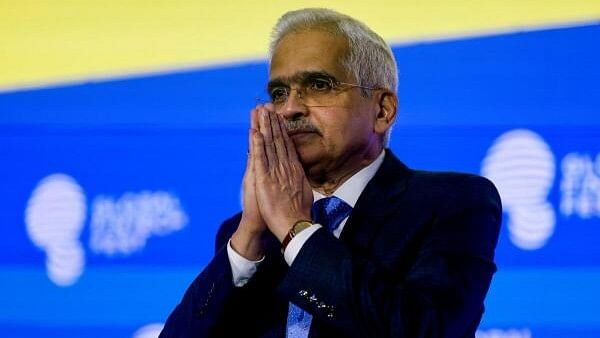
RBI Governor Shaktikanta Das
Credit: Reuters Photo
On August 26, Governor of the Reserve Bank of India (RBI) Shaktikanta Das announced that the apex bank is running a pilot of the Unified Lending Interface (ULI), a technology platform that will provide friction-less credit to small borrowers, especially those in rural areas.
The Unified Payments Interface (UPI) has been a game-changer in India’s digital payments landscape. Das expects the ULI to transform the lending system in a similar way.
Essentially, the ULI will facilitate a seamless flow of digital information (on land records, from banks, insurance companies, etc). By digitising access to a customer’s financial and non-financial data, the ULI will cut down the time taken for credit appraisal.
While the success of the UPI was attributed to Jan Dhan accounts, Aadhaar cards, and mobile telephony, popularly known as the JAM trinity, the RBI has proposed a new trinity — of JAM, UPI, and ULI — that will bring about a revolution in India’s digital infrastructure.
According to a report brought out by Ernst & Young, there are nearly 64 million micro, small, and medium enterprises (MSMEs) in India, but their credit penetration is only 14 per cent, as compared to 37 per cent in China, and 50% in the United States, the two other countries with large startup ecosystems.
In its report, Strengthening Credit Flows to the MSME Sector (March 2022), the government’s standing committee on finance has estimated the credit gap in the MSME sector to be around Rs 20-25 trillion. Therefore, the opportunity for digital lending in this sector is tremendous.
However, a platform like the ULI also needs to work for those who need it the most. Given the huge gender disparities in India, there is a lot that such a platform can do to emancipate women.
Over the last few decades, India has witnessed women opting out of the labour force. But post-Covid-19, there have been reports of a rise in female labour force participation rate (FLFPR) which economists have attributed to economic distress. A drop in earnings during the pandemic, widespread job losses, and inflation have compelled women to turn to self-employment.
Whether led by economic distress or opportunity, India is witnessing a rise in women-owned enterprises. The government’s Udyam Registration Portal has been witnessing a rise in women-owned MSMEs. According to a government statement issued in June, India has 63 million MSMEs, of which 20.5 per cent are women-owned, employing 27 million people. Rural areas have a greater share of women-owned MSMEs — at 22.4 per cent — as against 18.42 per cent in urban areas.
The situation is not very different in the unincorporated, or the informal, sector. According to the Annual Survey of Unincorporated Enterprises 2022-2023, there are around 65 million unincorporated establishments in India. Of these, 24.18 per cent are owned by women. Here too, rural areas have a greater share — at 28.08 per cent — as opposed to 21.77 per cent for urban areas.
A small loan disbursed at the right time can help women set up small businesses, such as a tea stall or a food catering business. It can also help women scale up their business and generate employment. In Bangladesh, the Grameen Bank, founded by Nobel Laureate and the chief adviser of the interim government, Muhammad Yunus, created self-employment opportunities for its poor women. Over 95 per cent of borrowers of Grameen Bank are said to be women.
Can the ULI do what the Grameen Bank did for women-owned businesses? There are several challenges along the way. For instance, nearly 20 per cent of women in India still do not have access to a bank account, says a report brought out by the Observer Research Foundation in December 2022.
Then there is the gender gap in mobile phone ownership and usage of mobile Internet. According to GSMA’s Mobile Gender Gap Report 2023, mobile ownership was 81 per cent for men and 72 per cent for women. Mobile Internet adoption was even lower — at 52 per cent for men and 31 per cent for women. This is despite low average revenue per user (ARPU) and attractive Internet data packages.
If 69 per cent of Indian women have not adopted mobile Internet, we can safely assume that they do not have UPI. Moreover, ownership of various financial and non-financial assets, such as fixed deposits, land and insurance policies, etc., is also likely to be skewed towards men. This too can work against the creditworthiness of women seeking loans.
Additionally, the adoption of UPI is a lot higher in south India than in the north. As is literacy. It’s likely that south India will benefit more from ULI than many other regions, thereby increasing regional disparities.
As of today, the journey towards meeting the micro-credit needs of small, women-owned enterprises appears to be long and arduous. It begins with changing patriarchal attitudes, and social norms, and stepping up female literacy and financial inclusion. Until that happens, the gender gap will continue to stare us in the face.
(Swati Prasad is a New Delhi-based business journalist. X: @swatiprasad)
Disclaimer: The views expressed above are the author's own. They do not necessarily reflect the views of DH.